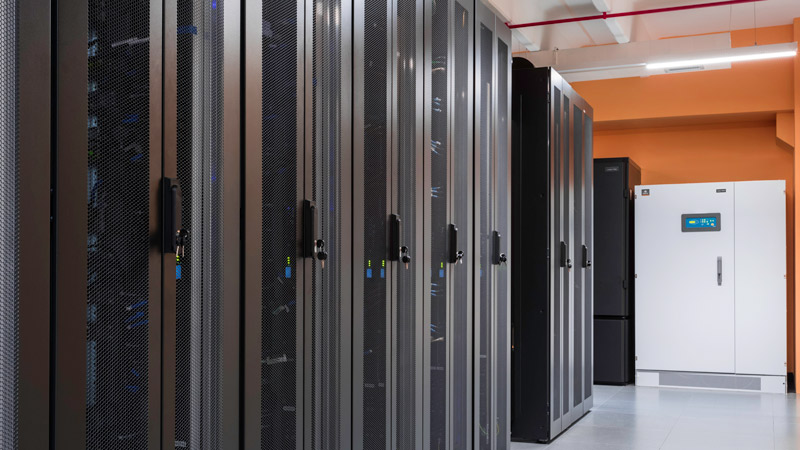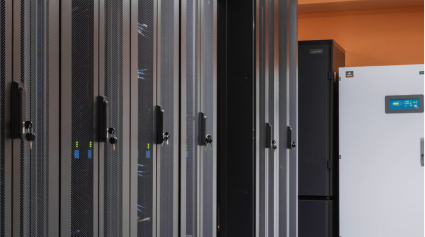I’ll be participating in a panel titled, More Renewables Please: How Can the Industry Scale Use and Conquer Intermittency? that will be broadcast on the DCD Energy and Sustainability channel on September 27, 2022. I’ll be joined on the panel, moderated by DCD’s Stephen Worn, by Microsoft’s Mark Monroe and RSP Architect’s Rajan Battish.
To say there is a lot to cover on this subject is an understatement. Renewable energy represents something of a holy grail for the data center industry because it could allow operators to eliminate Scope 1 greenhouse gas emissions from backup generators and Scope 2 emissions from carbon-based energy from the grid.
But there is that intermittency issue referenced in the panel’s title. Renewable sources like solar and wind just aren’t predictable enough to meet the always-on requirements of data centers. If you’ve been following this issue, you can probably guess where this discussion is headed: are fuel cells for data centers the key to helping the industry scale its use of renewable energy?
Because green hydrogen is produced from renewable energy, fuel cells using green hydrogen as their fuel source could provide a solution for data centers to use renewable energy without compromising continuity. Of course, that path comes with its own set of challenges, but before we get into those, I hope we can spend some time on a more immediate opportunity with the potential to facilitate the shift to renewable energy.
The Step Before Renewably Powered Data Centers
When it comes to reducing carbon emissions, how energy is generated is only part of the equation. The other part is how it is used. Low utilization rates resulting in large part from the need for redundancy have been common in data centers for as long as I can remember. Newer power system architectures are driving up utilization in centralized power systems, and now advances in rack-based power architectures are creating the same opportunity at the rack level.
Those advances are being driven by OCP Open Rack and the Open19 initiatives. At their core, both architectures utilize a power shelf supporting IT “bricks” – compute, storage or networking modules – to minimize hardware redundancies that exist in traditional servers while enabling standardization and flexibility.
After much development and collaboration across the industry, they are now coming of age and represent a practical solution for hyperscale, colo and enterprise data center operators to use energy more efficiently and accelerate speed to market. The new version of the Open19 standard, for example, includes a pluggable liquid cooling standard that enables greater flexibility in where high-density, liquid-cooled racks are deployed, and a 48V native power solution for more efficient distribution within the rack. Those advances add to the already superior efficiency of open architecture racks compared to legacy designs.
These architectures were viewed as revolutionary by some when they were first introduced, but it’s now clear they are more evolutionary than revolutionary. They design out the inefficiencies inherent in legacy architectures while leveraging existing facility infrastructure. Some operators have deployed battery back-up within the rack, but with the high operating efficiencies available in today’s large UPS systems a centralized power protection strategy delivers better efficiency.
So, what does all that have to do with renewable energy? First, improving data center efficiency and utilization lowers carbon emissions – and energy costs – as clean energy technologies mature. Then, it reduces the capital and operating costs associated with the transition to clean power, making that next step more economically feasible. As the industry prepares for renewables, I think often about what a data center industry veteran I’ve known for more than twenty years told me: “I want to use as little energy as I can, and I want every watt I use to be as efficient as I can make it.” That is how the sustainability journey starts.
The Next Step: Renewable Energy Plus Hydrogen Fuel Cells (Fuel Cells for Data Centers)
If you haven’t been monitoring developments in the fuel cell and hydrogen markets, you’ll be surprised at how much is changing and how quickly it is changing. Fuel cells have fallen dramatically in price and major public and private investments are being made in green hydrogen production. These trends are accelerating the timeline for the commercialization of fuel cell solutions for the data center, which will give us plenty to discuss on the panel. Tune into the broadcast to hear more about:
- What a data center fuel cell solution could look like
- Energy management capabilities enabled by fuel cells
- Hydrogen costs and storage requirements
- The role the data center industry can play in an evolving hydrogen economy
I know Rajan and Mark will both bring valuable insight and experience to these topics, and I’m excited to be participating on the panel with them. You can register to view the broadcast here. For more information on Vertiv’s approach to ESG, take a look at our ESG Report.












